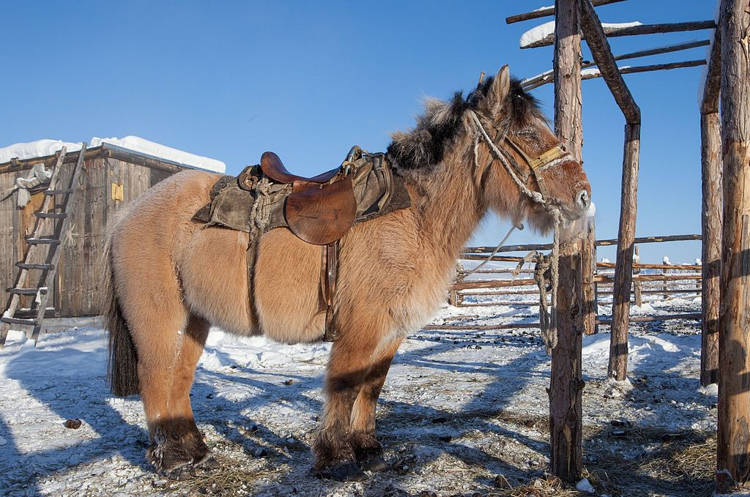Winter temperatures in Russia’s northern region of Yakutia can drop under a staggering -70 degrees Celsius, making it impossible for humans to stay outside for long periods of time. But for the indigenous horses of this region, such extreme temperatures are comfortable enough to spend days and nights in the open.
Yakutian horses are only 140-145 centimeters tall, but can weigh up to half a tonne, because of a thick layer of fat and heavy, thick mane that can reach up to 10 centimeters long. Because of their stocky physique and long mane, some have referred to them as the equestrian version of wooly mammoths. There’s more to that comparison than looks, though, as these horses can withstand far lower temperatures than any other horse breeds anywhere in the world.

Photo: Maarten Takens/Flickr
Yakutia, or the Saha Republic, in the Russian Far-East, routinely sees winter temperatures of -50 degrees Celsius, but in places like Verkhoyansk and Oymyakon, it can sometimes drop to under -70 degrees Celsius. Even the most reliable car will not start in these conditions, but luckily locals can always rely on their horses when they need to move around or haul stuff.
View this post on Instagram
Indigenous horses have played a vital role in the history of Yakutia. Not only have they proven dependable in the harshest of conditions, but their ability to forage for food by raking grass from under the one-meter-snow with their hooves has been invaluable to locals. Plus, in trying times the horses have been used as a source of food in the form of horse meat, and clothing in the form of horse hides.
View this post on Instagram
Yakut horses are known to move effortlessly through tall snow, even in conditions where most SUVs would struggle, and can carry up to 300 kg of cargo. They are also among the most resilient of horses, being able to actively work for up to 25-27 years, whereas the general average for horses is 20 years.
View this post on Instagram
Interestingly, the Yakutian hasn’t been around in the Far-East region for as long as originally thought. Scientists analyzed the breed’s genome and excluded the possibility that the Yakutian horses descended from the horses that existed in Yakutia in ancient times. Instead they found that it is related to the Mongolian, Fjord and Icelandic horses, with the Mongolian horses their most likely ancestors.
View this post on Instagram
But what really left scientists flabbergasted was the short time the Yakutian horse breed needed to adapt to the sharp climate of the Saha Republic, approximately 800 years.
View this post on Instagram
“This is blink-of-an-eye evolution,” says Doug Antczak, a veterinarian and equine scientist at Cornell University in Ithaca, New York. “What really captures peoples’ imaginations from this research is the evidence for rapid adaption to the environment – in this case a cold, harsh, dry environment.”
How the horses were able to evolve so rapidly – only about a hundred generations for horses – remains a mystery, but scientists say that it is proof of how fast evolution can occur sometimes.
Yakutian horses can only be found in Russia’s Saha Republic, as the warm climate of the more southern regions does not suit them at all. They remain an important part of life in one of the world’s most harshest environment.












